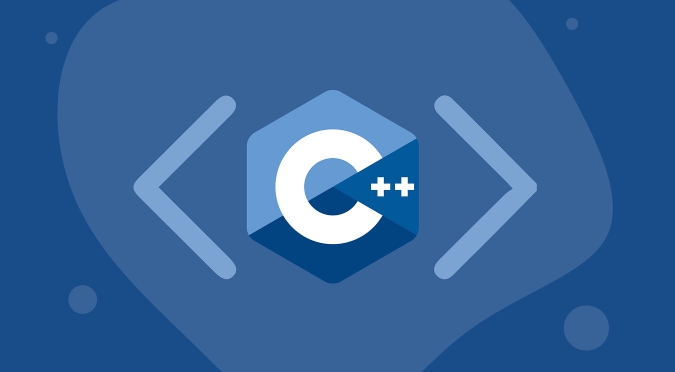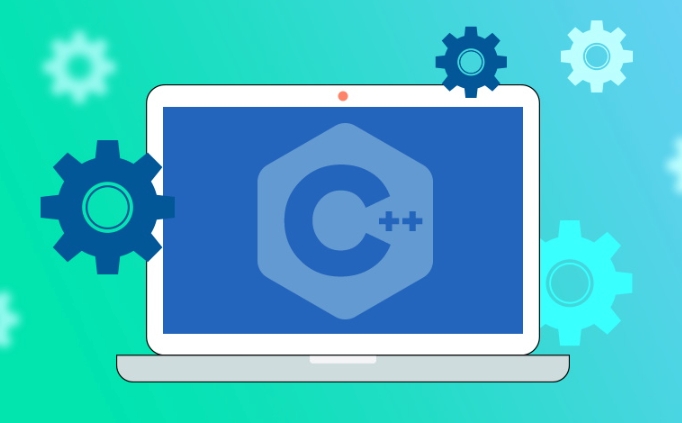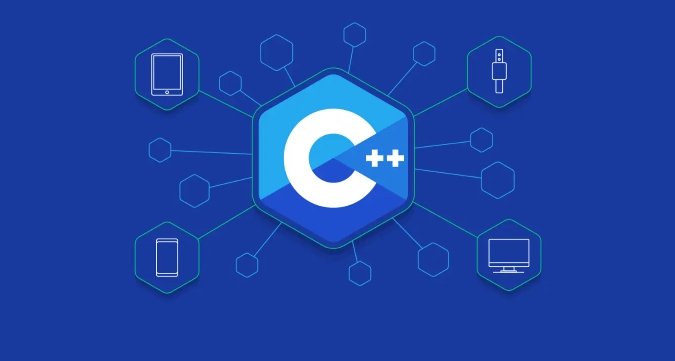In C, a class is a user-defined data type, a method to encapsulate and manipulate data, and an object is a specific instance of the class. 1. The class keyword is used to define the class, including member variables and member functions, and control visibility through access modifiers; 2. The object can be directly declared, defined or initialized by the array; 3. The constructor is used to initialize the object, without a return type, and can be overloaded; 4. Encapsulate the data protected through private, provide public method access and add verification logic. Mastering classes and objects is the basis for understanding OOP characteristics such as inheritance and polymorphism.

In C, classes and objects are the core concepts of object-oriented programming (OOP). Simply put, a class is like a blueprint, and an object is a concrete instance created based on this blueprint. If you are just starting to get involved in OOP, understanding the relationship between the two can help you write code that has clearer structure and easier maintenance.

What is a class? How to define a class?
A class is a user-defined data type that encapsulates data (variables) and functions (methods) that operate this data.

The basic syntax is as follows:
class class name {
// Member access permissions: public, private, protected
public:
// Member variable or member function};For example, let's define a class that represents "human information":

class Person {
public:
string name;
int age;
void introduce() {
cout << "Hi, I'm " << name << " and I'm " << age << " years old." << endl;
}
}; Here name and age are attributes of the class, introduce() is its behavior.
A few points to note:
- By default, members in the class are private, so you need to use
public:to explicitly declare which ones are accessible externally. - Class definitions usually end with semicolons.
How to create and use objects?
With classes, you can create objects like using built-in types.
Person person1; person1.name = "Alice"; person1.age = 30; person1.introduce(); // Output: Hi, I'm Alice and I'm 30 years old.
You can also define multiple objects at once:
Person person1, person2;
Or initialize the object array outside the class:
Person people[2]; people[0].name = "John"; people[0].age = 25;
It should be noted that if the members in the class are private, they cannot be accessed directly like the one above and must be operated indirectly through public methods (getter/setter).
Constructor: Let the object have initial value as soon as it is born
The constructor is automatically called every time an object is created. We can define the constructor ourselves to set the initial value.
class Person {
public:
string name;
int age;
// Constructor Person(string n, int a) {
name = n;
age = a;
}
void introduce() {
cout << "Hi, I'm " << name << " and I'm " << age << " years old." << endl;
}
};Then create the object like this:
Person person2("Bob", 28);
person2.introduce(); // Output: Hi, I'm Bob and I'm 28 years old.Some details:
- The constructor has no return type (including void)
- There can be multiple constructors (overloaded)
- If not written, the compiler will generate a default constructor (no parameters)
Encapsulation and access modifier: Protect your data
C provides three types of access controls:
-
public: externally accessible -
private: Only accessible inside the class -
protected: The derived class can be accessed (the inheritance section will be discussed later)
Usually we will set the data to private and provide public methods to access them:
class Person {
private:
string name;
int age;
public:
void setName(string n) { name = n; }
void setAge(int a) { age = a; }
void introduce() {
cout << "Hi, I'm " << name << " and I'm " << age << " years old." << endl;
}
};The advantage of this is that you can add verification logic when setting values ??to prevent illegal data.
Basically that's it. Classes and objects are a very basic but also very powerful part of C programming. Only by mastering them well can we better understand and use advanced features such as inheritance and polymorphism.
The above is the detailed content of C tutorial on classes and objects. For more information, please follow other related articles on the PHP Chinese website!

Hot AI Tools

Undress AI Tool
Undress images for free

Undresser.AI Undress
AI-powered app for creating realistic nude photos

AI Clothes Remover
Online AI tool for removing clothes from photos.

Clothoff.io
AI clothes remover

Video Face Swap
Swap faces in any video effortlessly with our completely free AI face swap tool!

Hot Article

Hot Tools

Notepad++7.3.1
Easy-to-use and free code editor

SublimeText3 Chinese version
Chinese version, very easy to use

Zend Studio 13.0.1
Powerful PHP integrated development environment

Dreamweaver CS6
Visual web development tools

SublimeText3 Mac version
God-level code editing software (SublimeText3)

Hot Topics
 Using std::chrono in C
Jul 15, 2025 am 01:30 AM
Using std::chrono in C
Jul 15, 2025 am 01:30 AM
std::chrono is used in C to process time, including obtaining the current time, measuring execution time, operation time point and duration, and formatting analysis time. 1. Use std::chrono::system_clock::now() to obtain the current time, which can be converted into a readable string, but the system clock may not be monotonous; 2. Use std::chrono::steady_clock to measure the execution time to ensure monotony, and convert it into milliseconds, seconds and other units through duration_cast; 3. Time point (time_point) and duration (duration) can be interoperable, but attention should be paid to unit compatibility and clock epoch (epoch)
 What is the volatile keyword in C ?
Jul 04, 2025 am 01:09 AM
What is the volatile keyword in C ?
Jul 04, 2025 am 01:09 AM
volatile tells the compiler that the value of the variable may change at any time, preventing the compiler from optimizing access. 1. Used for hardware registers, signal handlers, or shared variables between threads (but modern C recommends std::atomic). 2. Each access is directly read and write memory instead of cached to registers. 3. It does not provide atomicity or thread safety, and only ensures that the compiler does not optimize read and write. 4. Constantly, the two are sometimes used in combination to represent read-only but externally modifyable variables. 5. It cannot replace mutexes or atomic operations, and excessive use will affect performance.
 How to get a stack trace in C ?
Jul 07, 2025 am 01:41 AM
How to get a stack trace in C ?
Jul 07, 2025 am 01:41 AM
There are mainly the following methods to obtain stack traces in C: 1. Use backtrace and backtrace_symbols functions on Linux platform. By including obtaining the call stack and printing symbol information, the -rdynamic parameter needs to be added when compiling; 2. Use CaptureStackBackTrace function on Windows platform, and you need to link DbgHelp.lib and rely on PDB file to parse the function name; 3. Use third-party libraries such as GoogleBreakpad or Boost.Stacktrace to cross-platform and simplify stack capture operations; 4. In exception handling, combine the above methods to automatically output stack information in catch blocks
 What is a POD (Plain Old Data) type in C ?
Jul 12, 2025 am 02:15 AM
What is a POD (Plain Old Data) type in C ?
Jul 12, 2025 am 02:15 AM
In C, the POD (PlainOldData) type refers to a type with a simple structure and compatible with C language data processing. It needs to meet two conditions: it has ordinary copy semantics, which can be copied by memcpy; it has a standard layout and the memory structure is predictable. Specific requirements include: all non-static members are public, no user-defined constructors or destructors, no virtual functions or base classes, and all non-static members themselves are PODs. For example structPoint{intx;inty;} is POD. Its uses include binary I/O, C interoperability, performance optimization, etc. You can check whether the type is POD through std::is_pod, but it is recommended to use std::is_trivia after C 11.
 How to call Python from C ?
Jul 08, 2025 am 12:40 AM
How to call Python from C ?
Jul 08, 2025 am 12:40 AM
To call Python code in C, you must first initialize the interpreter, and then you can achieve interaction by executing strings, files, or calling specific functions. 1. Initialize the interpreter with Py_Initialize() and close it with Py_Finalize(); 2. Execute string code or PyRun_SimpleFile with PyRun_SimpleFile; 3. Import modules through PyImport_ImportModule, get the function through PyObject_GetAttrString, construct parameters of Py_BuildValue, call the function and process return
 What is function hiding in C ?
Jul 05, 2025 am 01:44 AM
What is function hiding in C ?
Jul 05, 2025 am 01:44 AM
FunctionhidinginC occurswhenaderivedclassdefinesafunctionwiththesamenameasabaseclassfunction,makingthebaseversioninaccessiblethroughthederivedclass.Thishappenswhenthebasefunctionisn’tvirtualorsignaturesdon’tmatchforoverriding,andnousingdeclarationis
 What is a null pointer in C ?
Jul 09, 2025 am 02:38 AM
What is a null pointer in C ?
Jul 09, 2025 am 02:38 AM
AnullpointerinC isaspecialvalueindicatingthatapointerdoesnotpointtoanyvalidmemorylocation,anditisusedtosafelymanageandcheckpointersbeforedereferencing.1.BeforeC 11,0orNULLwasused,butnownullptrispreferredforclarityandtypesafety.2.Usingnullpointershe
 How to pass a function as a parameter in C ?
Jul 12, 2025 am 01:34 AM
How to pass a function as a parameter in C ?
Jul 12, 2025 am 01:34 AM
In C, there are three main ways to pass functions as parameters: using function pointers, std::function and Lambda expressions, and template generics. 1. Function pointers are the most basic method, suitable for simple scenarios or C interface compatible, but poor readability; 2. Std::function combined with Lambda expressions is a recommended method in modern C, supporting a variety of callable objects and being type-safe; 3. Template generic methods are the most flexible, suitable for library code or general logic, but may increase the compilation time and code volume. Lambdas that capture the context must be passed through std::function or template and cannot be converted directly into function pointers.






